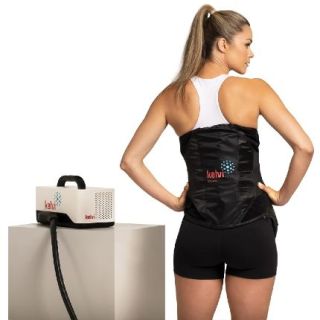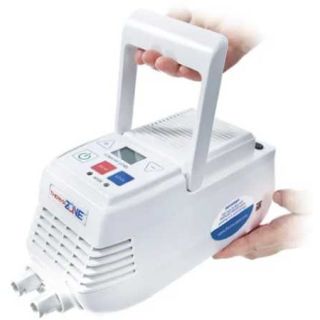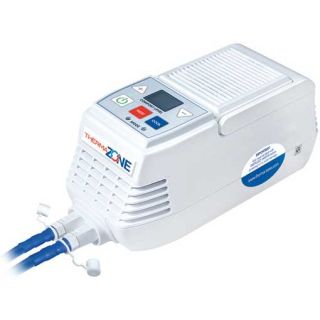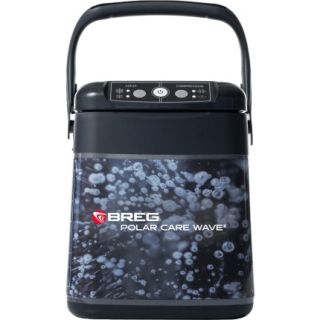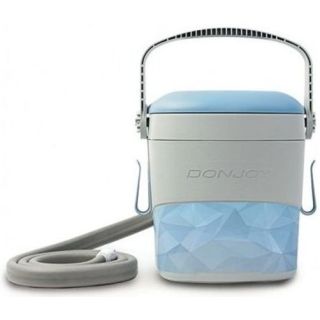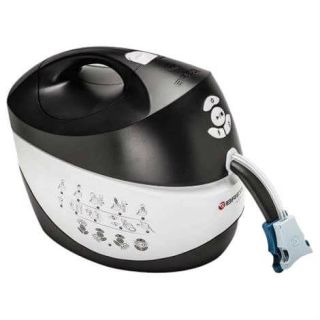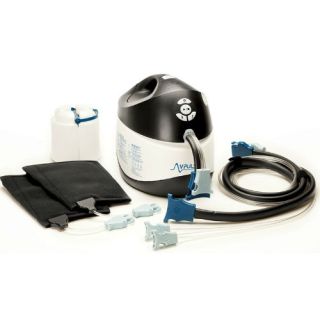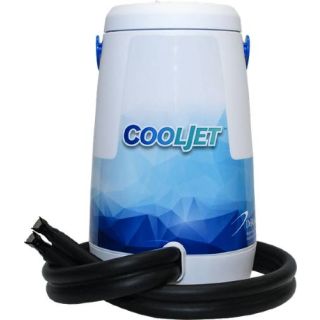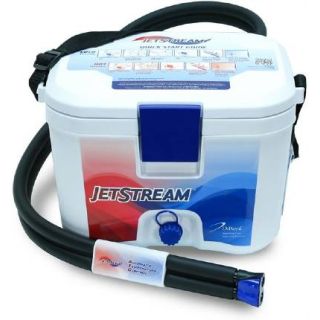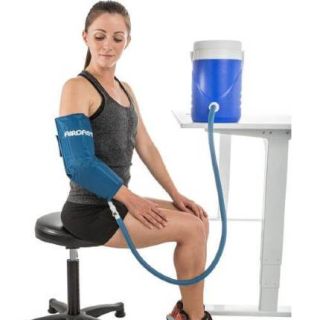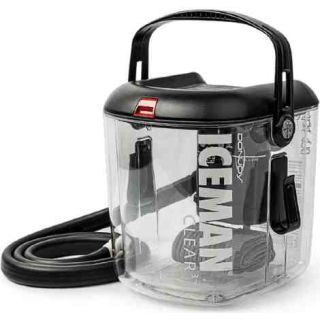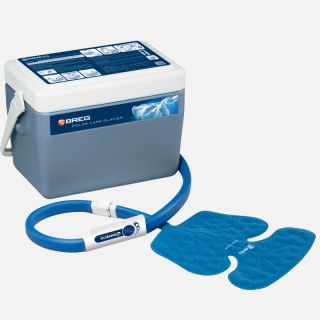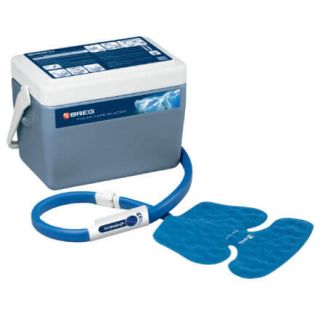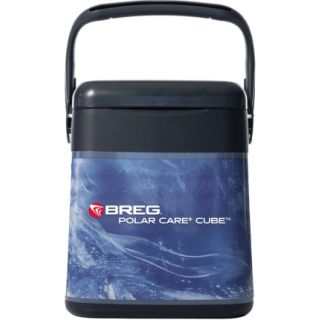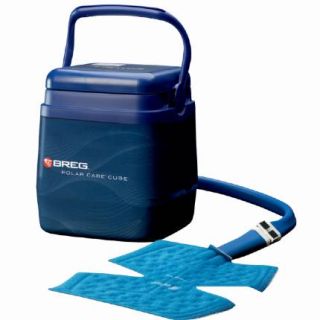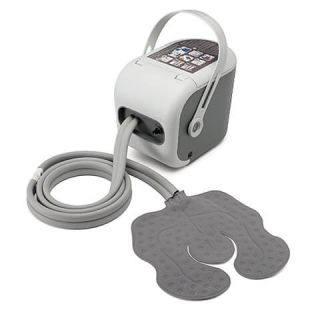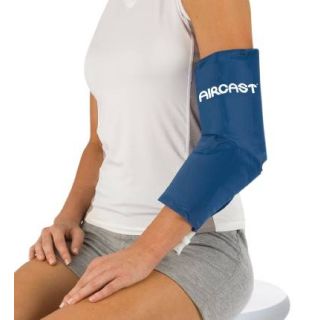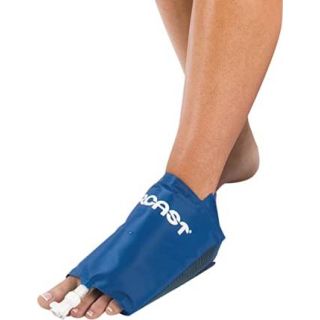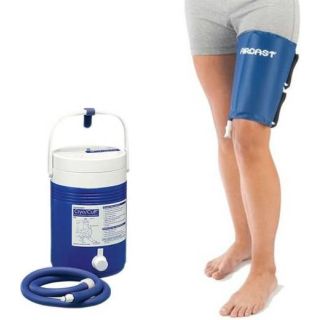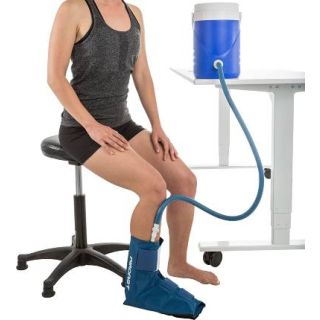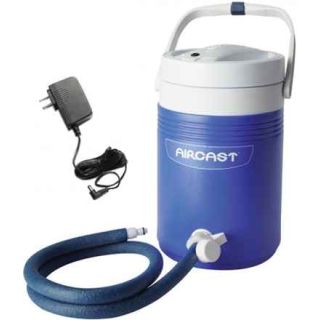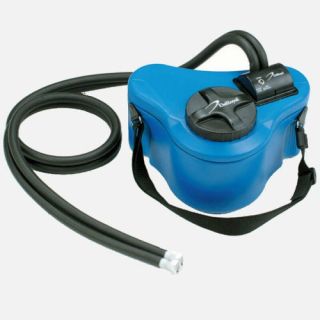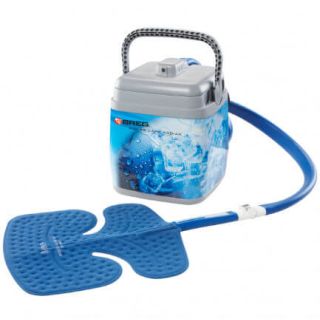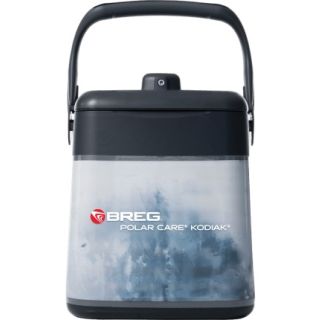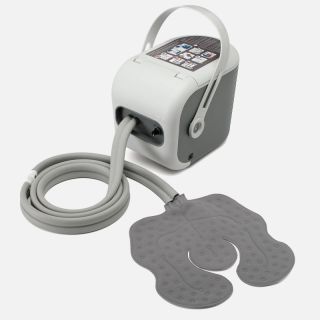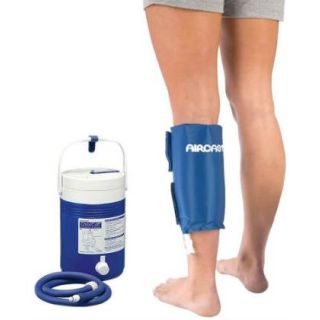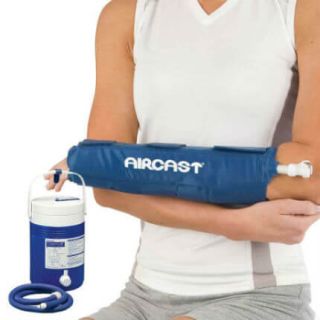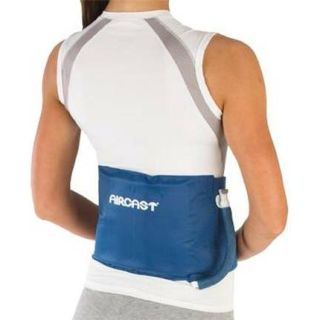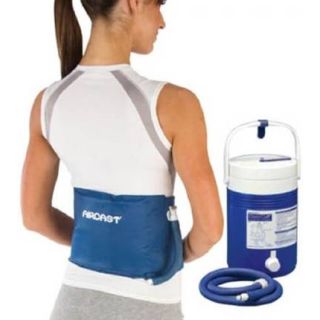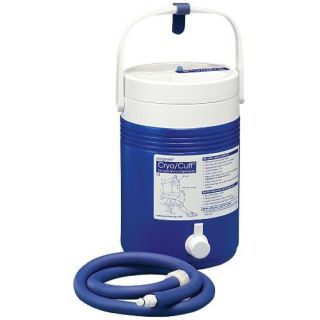Ice Machine For Knee Surgery
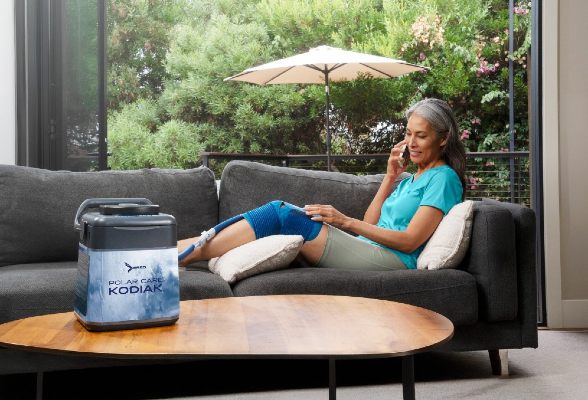
The Ultimate Guide to Choosing the Best Ice Machine for Your Knee Surgery Recovery
Undergoing knee surgery is a significant step towards regaining mobility and reducing pain. However, the recovery period can be challenging, often accompanied by pain, swelling, and inflammation. One of the most effective tools for managing these post-operative symptoms is cold therapy.
While traditional ice packs can offer some relief, an ice machine for knee surgery provides consistent, effective cold therapy, making the post surgery recovery process more comfortable and manageable.
This comprehensive guide is designed to help you, the consumer, navigate the world of ice machines and make an informed purchase that best suits your individual needs and recovery journey.
We will delve into the benefits of using an ice machine, explore the different types available, highlight crucial features to consider, discuss popular models recommended by surgeons, provide guidance on proper usage, address safety concerns, and answer frequently asked questions.
Our goal is to equip you with the knowledge necessary to choose the right cold therapy solution and optimize your healing process.
Why Invest in an Ice Machine for Knee Surgery Recovery?
Following knee surgery, your body initiates a natural inflammatory response to begin the healing process. While necessary, this inflammation can lead to significant pain, swelling, and stiffness, hindering your rehabilitation progress. Cold therapy, also known as cryotherapy, plays a vital role in counteracting these effects. Here's why an ice machine can be an invaluable asset during your recovery:
- Effective Pain Relief: Cold temperatures help to numb the nerve endings in the treated area, reducing the sensation of pain. This can significantly decrease your reliance on pain medication, which can have unwanted side effects.
- Reduced Swelling and Inflammation: Cold therapy constricts blood vessels, which in turn reduces the flow of fluid to the injured area. This helps to minimize swelling and inflammation, crucial for promoting healing and restoring range of motion.
- Accelerated Healing: By reducing inflammation and swelling, an ice machine can create a more optimal environment for tissue repair and regeneration. This can potentially speed up your overall recovery timeline.
- Consistent and Controlled Cooling: Unlike ice packs that quickly warm up and require frequent replacement, an ice machine provides continuous, consistent cooling at a controlled temperature. This ensures sustained therapeutic benefits throughout your treatment sessions.
- Targeted Therapy: Ice machines come with specialized pads or wraps designed to conform to the contours of your knee, ensuring that the cold therapy is delivered directly to the knee joint for maximum effectiveness.
- Convenience and Ease of Use: Once set up, an ice machine requires minimal effort. You can relax and receive therapeutic cooling without the hassle of constantly refilling ice packs. Many models also offer convenient features like timers and adjustable temperature settings.
While traditional ice packs offer a more budget-friendly option, they often fall short in terms of consistency, convenience, and targeted cold therapy application. An ice machine represents a more significant investment but offers superior therapeutic benefits that can significantly enhance your knee surgery recovery.
Exploring the Different Types of Ice Machines for Knee Surgery
The market offers various types of ice machines for knee surgery, each with its own set of features and benefits. Understanding these differences will help you narrow down your options and choose the cold therapy machine that best aligns with your needs and budget:
- Gravity-Fed Ice Machines: These are typically the simplest and most affordable type of ice machine. They rely on gravity to circulate cold water from the reservoir to the knee pad and back. You simply fill the reservoir with ice and water, and the system does the rest. While effective for basic cold therapy, they may lack advanced features like temperature control or compression.
- Electric Pump Ice Machines: These models utilize an electric pump to actively circulate the chilled water, providing more consistent and often more powerful cooling compared to gravity-fed systems. They often come with features like adjustable temperature settings and timers, allowing for more personalized treatment. Electric pump models are generally more expensive than gravity-fed options.
- Compression Therapy Ice Machines: These advanced machines combine the benefits of cold therapy with intermittent pneumatic compression. The compression helps to further reduce swelling and improve circulation, potentially leading to faster healing and better outcomes. These models are typically more expensive but offer a comprehensive approach to post-operative recovery.
- Portable and Battery-Powered Ice Machines: For individuals who need more flexibility and mobility during their recovery, portable and battery-powered ice machines offer a convenient solution. These compact units allow you to receive cold therapy while moving around the house or even while traveling (with your doctor's approval). They may have a smaller ice reservoir and battery life, so consider your usage needs.
When choosing the type of ice machine, consider factors such as your budget, the severity of your post-operative symptoms, your lifestyle, and any specific recommendations from your surgeon.
Key Features to Consider When Making Your Purchase
To make the right choice, it's essential to carefully consider the various features offered by different ice machines. Here are some key aspects to evaluate:
- Temperature Control: The ability to adjust the temperature of the circulating water is a significant advantage, especially if you are sensitive to extreme cold. Look for models that offer a range of temperature settings to ensure comfortable and effective therapy.
- Timer Settings: A built-in timer allows you to set the duration of your cold therapy sessions, ensuring that you don't overdo it and risk potential complications like frostbite.
Compression Capabilities: If your surgeon recommends compression therapy, look for models that offer this feature. Consider the adjustability of the compression levels to customize your treatment. - Portability and Size: If you need to move around frequently during your recovery, consider the size and weight of the ice machine. Look for models with carrying handles or wheels for easier transport. Battery-powered options offer the ultimate portability.
Ease of Use and Maintenance: Choose a machine that is straightforward to set up, operate, and maintain. Consider the ease of filling the ice reservoir, adjusting settings, and cleaning the unit and the knee pad. - Noise Level: Some ice machines can be noisy during operation, which might be disruptive, especially if you plan to use it while sleeping or working. Check reviews for information on the noise level of different models.
- Durability and Reliability: Invest in a machine that is built to last and has a reputation for reliability. Reading customer reviews can provide valuable insights into the durability of different brands and models.
- Cost and Warranty: Ice machines can range in price from relatively affordable to quite expensive. Determine your budget and compare the features offered by machines within your price range. Also, check the warranty offered by the manufacturer for peace of mind.
- Knee Pad/Wrap Design and Fit: The knee pad is a crucial component as it directly delivers cold therapy to your surgical site. Ensure that the pad is designed specifically for the knee, offers a comfortable and secure fit, and provides adequate coverage of the affected area. Some models offer different sizes of pads to accommodate various body types.
By carefully evaluating these features based on your individual needs and preferences, you can make a well-informed decision and choose an ice machine that will effectively support your post surgical knee recovery.
Popular Ice Machine Models Often Recommended by Surgeons
While it's always best to consult with your own surgeon for specific recommendations, several ice machine models are consistently praised by medical professionals for their effectiveness and reliability. Here are a few popular options you might encounter:
- Breg Polar Care Cube: This is a widely recommended and popular gravity-fed ice machine known for its simplicity, portability, and effectiveness. It's easy to use and provides consistent cooling for several hours.
- DonJoy Iceman Clear3: This electric pump model offers adjustable flow rates and a clear cooler, allowing you to easily monitor the water level. It's known for its quiet operation and effective pain relief.
- Aircast Cryo/Cuff: This system combines cold therapy with compression, offering a comprehensive approach to reducing pain and swelling. It utilizes a gravity-fed system with a specifically designed cuff that provides circumferential compression around the knee.
- DeRoyal CoolJet Cold Therapy: This electric pump model is known for its quiet operation and ability to deliver consistent and deep cooling. It features adjustable temperature settings and a durable design.
These are just a few examples, and many other reputable brands and models are available. It's crucial to discuss your specific needs and your surgeon's recommendations before making a final decision. Our physical therapists here at DME-Direct can also advise you on the best type and model of ice machine based on your surgery, medical history, and individual circumstances.
How to Properly Use an Ice Machine for Optimal Recovery
Using your ice machine correctly is essential to maximize its benefits and avoid potential complications. Here are some general guidelines, but always follow your doctor's specific instructions:
- Prepare the Ice Machine: Fill the reservoir with ice and water according to the manufacturer's instructions. Some models may have specific fill lines.
- Apply the Knee Pad: Position the knee pad securely around your surgical site. Ensure that it is snug but not too tight to restrict circulation. Always use a thin barrier, such as a towel or bandage, between your skin and the cold therapy pad to prevent frostbite.
- Connect the Tubing: Connect the tubing from the ice machine to the knee pad, ensuring a secure connection.
- Turn on the Machine: If you have an electric pump model, turn it on and adjust the temperature and timer settings as recommended by your doctor or the manufacturer. Gravity-fed models will begin circulating automatically.
- Treatment Duration and Frequency: Your doctor will provide specific instructions on how long and how often you should use the ice machine. Typically, sessions last for 15-20 minutes and can be repeated several times throughout the day, especially in the initial days following surgery.
- Monitor Your Skin: Regularly check your skin under the knee pad for any signs of excessive redness, numbness, or pain. If you experience any discomfort, discontinue use and consult your doctor.
- Follow Your Doctor's Instructions: The guidelines provided here are general. Always prioritize and adhere to the specific instructions provided by your surgeon or physical therapist regarding the use of your ice machine.
Safety Precautions and Potential Risks Associated with Ice Machine Use
While ice machines are generally safe and effective, it's crucial to be aware of potential risks and take necessary precautions:
- Frostbite: Prolonged exposure to extreme cold can lead to frostbite. Always use a barrier between your skin and the cold therapy pad and adhere to the recommended treatment duration.
- Nerve Damage: In rare cases, prolonged or improper use of cold therapy can potentially lead to nerve damage. Follow your doctor's instructions carefully and discontinue use if you experience any unusual numbness or tingling.
- Skin Sensitivity: Some individuals may have increased sensitivity to cold. If you experience excessive discomfort or an adverse reaction, stop using the ice machine and consult your doctor.
- Check for Leaks: Regularly inspect the ice machine and tubing for any leaks to prevent water damage.
- Keep Out of Reach of Children and Pets: Ensure that the ice machine and its components are kept out of reach of children and pets to prevent accidental injury or damage.
By being mindful of these safety precautions and following your doctor's guidance, you can safely and effectively utilize an ice machine to enhance your knee surgery recovery.
Frequently Asked Questions (FAQs) About Ice Machines for Knee Surgery
To further assist you in your decision-making process, here are some frequently asked questions about i c e machines for knee surgery:
How long should I use an ice machine each day? The duration and frequency of use will depend on your individual condition and your doctor's recommendations. Typically, sessions last for 15 - 20 minutes and can be repeated several times a day, especially in the initial days after surgery.
Can I use the ice machine while sleeping? It is generally not recommended to use an ice machine while sleeping due to the risk of frostbite or nerve damage if you cannot monitor your skin. Always follow your doctor's specific instructions.
What temperature should I set the machine to? The ideal temperature will vary depending on the model and your comfort level. Many electric pump models offer adjustable temperature settings. Start with a warmer setting and gradually decrease it as tolerated. Always follow the manufacturer's instructions and your doctor's guidance.
How do I clean and maintain the ice machine? Refer to the manufacturer's instructions for specific cleaning and maintenance guidelines. Generally, you should empty the water reservoir after each use and clean the exterior of the machine and the knee pad with a mild soap and water solution. Ensure everything is completely dry before storing.
Is an ice machine covered by insurance? In some cases, your insurance may cover the cost of an ice machine if it is deemed medically necessary. Check with your insurance provider to understand your coverage options and if you need a prescription from your doctor. Generally, most insurance plans do not cover ice machines.
Can I use regular ice in an ice machine? Yes, most ice machines are designed to be used with regular ice cubes or crushed ice. Follow the manufacturer's instructions for the recommended type and amount of ice.
What are the alternatives to an ice machine? Traditional ice packs, gel packs, and cold therapy sprays are alternatives to ice machines. However, they often lack the consistency and convenience of an ice machine.
Where can I buy an ice machine? DME-Direct carries an extensive selection of ice machines that include a full manufacturer's warranty. Our machines are brand-new, unused, and never returned, unlike those from third-party marketplace sites.
How much does an ice machine cost? The cost of an ice machine can vary widely depending on the type, features, and brand. Gravity-fed models are generally more affordable, while electric pump and compression therapy models tend to be more expensive. Prices can range from around $100 to several hundred dollars.
How do I know which size pad to get? Most ice machine manufacturers offer different sizes of knee pads to accommodate various body types. Consult the product specifications or contact the manufacturer for guidance on choosing the appropriate size.
What if the pad doesn't stay in place? Ensure that the straps or closures on the knee pad are properly secured. You may also consider using an elastic bandage to help hold the pad in place.
Can I use the ice machine on other parts of my body? Some ice machines come with different types of pads that can be used on other joints or body parts. Consult the manufacturer's information or your doctor to determine if your machine is suitable for other applications.
How long will I need to use the ice machine? The duration of your cold therapy treatment will depend on your individual recovery progress and your doctor's recommendations. You may need to use it for several weeks or even months following your surgery.
Conclusion: Making the Right Choice for a Smoother Recovery
Choosing the right ice machine for your knee surgery recovery is a crucial step towards pain management, reducing swelling, and promoting healing. By understanding the benefits of cold therapy, exploring the different types of ice machines available, considering key features, and consulting with your surgeon, you can make an informed decision that best suits your individual needs and budget.
Investing in a quality ice machine can significantly enhance your comfort and accelerate your journey back to full mobility after knee surgery. Remember to always prioritize your doctor's recommendations and follow their instructions for optimal recovery.
DME-Direct carries a full assortment of ice machines that can be used for recovery at home and while participating in physical therapy.
